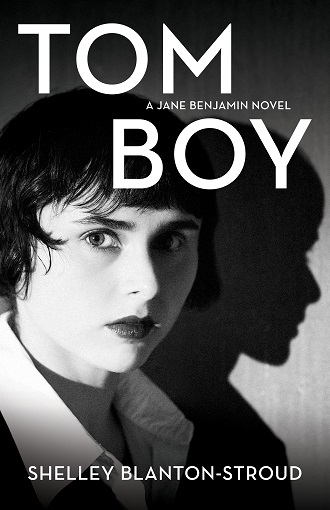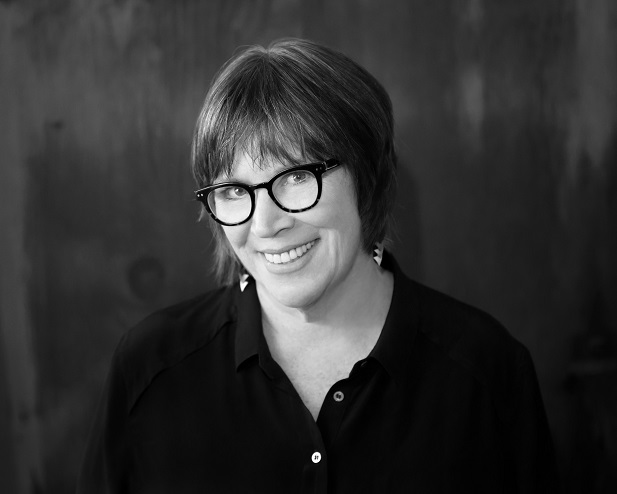I write for a reader like me—someone who loves a story, a plot that moves, but who also loves meat on the bones of her mystery, something to talk about in a book club.
Shelley Blanton-Stroud – 28 June 2022
The Back Flap
It’s 1939. On the brink of World War II, Jane Benjamin wants to have it all. By day she hustles as a scruffy, tomboy cub reporter. By night she secretly struggles to raise her toddler sister, Elsie, and protect her from their mother. But Jane’s got a plan: she’ll become the San Francisco Prospect’s first gossip columnist and make enough money to care for Elsie.
Jane finagles her way to the women’s championship at Wimbledon, starring her hometown’s tennis phenom and cover girl Tommie O’Rourke. She plans to write her first column there. But then she witnesses Edith “Coach” Carlson, Tommie’s closest companion, drop dead in the stands of apparent heart attack, and her plan is thrown off track.
While sailing home on the RMS Queen Mary, Jane veers between competing instincts: Should she write a social bombshell column, personally damaging her new friend Tommie’s persona and career? Or should she work to uncover the truth of Coach’s death, which she now knows was a murder, and its connection to a larger conspiracy involving US participation in the coming war?
Putting away her menswear and donning first-class ballgowns, Jane discovers what upper-class status hides, protects, and destroys. Ultimately—like nations around the globe in 1939—she must choose what she’ll give up in order to do what’s right.
About the book
What is the book about?
Set in the 1930s, Tomboy is about Jane Benjamin, an ambitious young woman struggling to balance her desire to prove herself in the competitive world of gossip journalism against her obligation to family and friends and her obligation to tell the truth. The stakes get higher when people start dying and Jane has to decide what to do with the facts she finds about those murders.
When did you start writing the book?
I wrote this book, the second in the Jane Benjamin series, during the pandemic, alongside my then-new Zoom critique group, the RBGs, made of four She Writes Press authors. Each of us drafted a book in the pandemic.
How long did it take you to write it?
Tomboy’s first draft really only took six months, with several versions emerging after that draft. This was surprisingly fast for me. (Book one in the Jane Benjamin series took me almost ten years to birth.) Because I’m writing a series, I’d done a lot of the groundwork already, knew the protagonist, the setting, the period. That made it faster at the outset. Also, I got so much help from my critique group, which kept nudging me forward, no doubt faster than I might have gone without them.
Where did you get the idea from?
I knew Tomboy would take place two years after Copy Boy (book one in the series), in 1939, on the brink of World War II. Because I’m interested in Jane’s coming of age as an ambitious woman in history, I thought it would be good to set an important part of the novel at the Wimbledon Ladies Championship. Centre Court was the perfect place to display the world’s shock at witnessing unconventional female ambition. I knew somebody was going to have to die at Wimbledon—I mean, the book’s a mystery—and tennis was going to be at the heart of it.
Were there any parts of the book where you struggled?
Jane had to travel by train and by ship from San Francisco to Wimbledon. I’d never traveled much by rail and I had never taken a cruise. What’s more, the RMS Queen Mary, on which Jane sails, was closed to visitors in its berth in Long Beach due to the pandemic. So, I had to turn to generous online experts (as well as piles of books) to learn the ins and outs of such travel. To learn about 1930s cross-country rail travel, I reached out to the California State Railroad Museum. They created a 19-page, single spaced document written by two museum volunteers, teaching me “how to get Jane to New York.” That document was a life-saver.
What came easily?
I’m ashamed to say the element of this novel that came easiest to me was Jane’s irritability. Jane’s going through some things with her health at the same time she’s dealing with work and family crises. Plus, she’s got to solve two murders. Her head really hurts and she feels sick. She behaves rather badly. Jane’s a difficult girl. I must admit I really enjoyed writing her crankiness. I’m afraid it came too easily to me.
Are your characters entirely fictitious or have you borrowed from real world people you know?
I borrow from real-world people in history. But I use them as inspiration and do not adhere to their actual lived experiences. Here’s one example. The novel’s tennis player, Tommie O’Rourke, is based on real-life tennis phenom Alice Marble. Like Tommie, Alice was from San Francisco and she won the 1939 Wimbledon Ladies Championship. Also, like Tommie, she was a gifted natural at almost anything she tried, including clothes design, creating the original Wonder Woman’s clothing design. (Not to mention editing the comic book.) She also kept her love life secret, as Tommie does. But the real-life Alice Marble was never suspected of murder (so far as I know).
We all know how important it is for writers to read. Are there any particular authors that have influenced how you write and, if so, how have they influenced you?
So many authors have influenced my writing. There’s a lot of Louisa May Alcott’s Jo March in Jane Benjamin. They’re both difficult girls, due to their ambition. But they also give a reader hope of reaching something unlikely. I have also been influenced by The Talented Mr. Ripley, by Patricia Highsmith. I love the way Tom Ripley decides he can just reinvent himself, and he pretty much gets away with it. (Of course I don’t approve of the murders he commits while incognito.) Jane has a little bit of Tom Ripley in her, too. She’s a chameleon. And Suzanne Rindell’s The Other Typist influenced me in the way the protagonist yearns to be someone else, almost as much as she yearns to possess someone else.
Do you have a target reader?
I write for a reader like me—someone who loves a story, a plot that moves, but who also loves meat on the bones of her mystery, something to talk about in a book club. I’m writing for book club readers who like mysteries with historical and sociological relevance.
About Writing
Do you have a writing process? If so can you please describe it?
My process has changed. Copy Boy developed organically. I discovered what the book was by writing it. Over and over and over again. Tomboy developed with a lot of early planning. Because I already knew so much about the psychology and the world of my protagonist, I was able to plan the story and then enjoy the surprises that turned up in the process of writing it.
Do you outline? If so, do you do so extensively or just chapter headings and a couple of sentences?
I use Jessica Brody’s Save the Cat Writes a Novel beat system for the overall shape. I am willing to throw out any of it that no longer fits as I go.
Do you edit as you go or wait until you’ve finished?
I try to resist editing as I go but it is so hard. It’s tempting to stop and fix rather than to keep inventing but I aim to get better at just moving on, editing later. Editing is heaven.
Did you hire a professional editor?
She Writes Press does provide editing but I also hired a freelance editor, who made a huge difference in my draft, pointing out the gaping holes in logic the first time through.
Do you listen to music while you write? If yes, what gets the fingers tapping?
I listen to music around my drafting time, but not during it. I’m too distractible. When I’m in process of writing, I like to listen to period music in the hours before and after, to sustain the mood. This time I listened to a lot of swing music as well as Irish folk tunes, which fits some scenes that take place in the hull of the RMS Queen Mary.
About Publishing
Did you submit your work to Agents?
Early on, I sent my manuscript to a short list of agents. But, because I began writing in earnest as a second career, I decided I just wanted to get on with it, to begin the writing life and work in earnest without spending years waiting for someone else to approve me for the profession. I knew fairly early that I would aim for She Writes Press, which does not require an agent.
What made you decide to go Indie, whether self-publishing or with an indie publisher? Was it a particular event or a gradual process?
It was the early realization that I did not have a platform or persona that would attract a legacy publishing house, though I was very confident of my premise, my writing skills and my work habits. I decided not to self-flagellate about what I was not, but just to get on with the work, which is what I did. I’m very happy to have gone that route.
Did you get your book cover professionally done or did you do it yourself?
She Writes Press provides a wonderful book cover design process. I am incredibly pleased by the result of that collaboration.
Do you have a marketing plan for the book or are you just winging it?
I have hired a publicist and a marketing consultant to teach me to do the things I don’t yet know how to do. I consider it an investment in myself and in my writing career and I love learning. (I don’t golf or take expensive vacations.)
Any advice that you would like to give to other newbies considering becoming Indie authors?
Though wordsmithing talent and general creativity matter, it matters more that you are willing to dig in and do something highly unlikely to succeed in any real-world measurable way. You have to want to do it because you can’t imagine not-doing-it. The indie writing life requires a certain amount of admirable stubbornness.
About You
Where did you grow up?
Bakersfield, California, where many of my story ideas gestated.
Where do you live now?
Sacramento, California, which feels like my forever hometown.
What would you like readers to know about you?
I adore conversations with readers about the story behind the story. I love to participate in book clubs and library groups and panels and any activity that allows me to hear what people think about the way their family stories have impacted their life trajectory.
What are you working on now?
I am continuing the Jane Benjamin Novels series. Book three will be published in August 2023.
End of Interview:
For more from Shelly Blanton-Stroud, visit her website, like her Facebook page, and follow her on Twitter and Instagram.
Get your copy of Tomboy from Amazon US or Amazon UK.



